SS Benjamin Harrison was a Liberty ship built in the United States during World War II. She was named after Benjamin Harrison, an American planter and merchant, a revolutionary leader, and a Founding Father of the United States. She served a year from March 1942 to March 1943, when she was attacked and scuttled.

German submarine U-48 was a Type VIIB U-boat of Nazi Germany's Kriegsmarine during World War II, and the most successful that was commissioned. During her two years of active service, U-48 sank 52 ships for a total of 306,874 GRT and 1,060 tons; she also damaged three more for a total of 20,480 GRT over twelve war patrols conducted during the opening stages of the Battle of the Atlantic.

German submarine U-38 was a Type IXA U-boat of Nazi Germany's Kriegsmarine that operated during World War II.

SS Alexander Macomb was a Liberty ship built in the United States during World War II. She was named after Alexander Macomb, the Commanding General of the United States Army from May 29, 1828, until his death on June 25, 1841. Macomb was the field commander at the Battle of Plattsburgh, during the War of 1812, and after the decisive victory, was lauded with praise and styled "The Hero of Plattsburgh" by some of the American press. He was promoted to Major General for his conduct, receiving both the Thanks of Congress and a Congressional Gold Medal.

German submarine U-66 was a Type IXC U-boat of Nazi Germany's Kriegsmarine during World War II. The submarine was laid down on 20 March 1940 at the AG Weser yard at Bremen, launched on 10 October and commissioned on 2 January 1941 under the command of Kapitänleutnant Richard Zapp as part of the 2nd U-boat Flotilla.

The Battle of the Caribbean refers to a naval campaign waged during World War II that was part of the Battle of the Atlantic, from 1941 to 1945. German U-boats and Italian submarines attempted to disrupt the Allied supply of oil and other material. They sank shipping in the Caribbean Sea and the Gulf of Mexico and attacked coastal targets in the Antilles. Improved Allied anti-submarine warfare eventually drove the Axis submarines out of the Caribbean region.

SS Alcoa Puritan was a cargo ship in the service of Alcoa Steamship Company that was torpedoed and sunk in the Gulf of Mexico during World War II.

The SS Irish Oak was an Irish-operated steamship that was sunk in the North Atlantic during World War II by a German submarine.
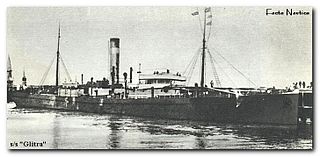
SS Glitra was a steam cargo ship that was launched in 1881 as Saxon Prince. In 1896 she was renamed Glitra. In 1914 she became the first British merchant vessel to be sunk by a U-boat in the First World War.

German submarine U-46 was a Type VIIB U-boat of Nazi Germany's Kriegsmarine during World War II. She had a highly successful career during the war.
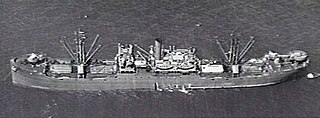
USS West Gate (ID-3216) was a cargo ship for the United States Navy during World War I. The ship was laid down as SS War Agate, but she was launched in January 1918 as SS West Gate instead.

W. L. Steed was a steam tanker built in 1917–1918 by Bethlehem Shipbuilding Corporation of Quincy for Pan American Petroleum and Transport Company, with intention of transporting oil and petroleum products between Mexican and Gulf ports and the Northeast of the United States. The ship was briefly requisitioned by the US Government during World War I but returned to commercial service in early 1919. The ship was named after William L. Steed, superintendent of the Mexican Petroleum Company of California.
German submarine U-178 was a Type IXD2 U-boat of Nazi Germany's Kriegsmarine built for service during World War II.

SS West Eldara was a steel-hulled cargo ship built in 1918 as part of the United States Shipping Board's emergency World War I shipbuilding program.

SS West Lashaway was a steel–hulled cargo ship that saw service with the U.S. Navy during World War I as the auxiliary ship USS West Lashaway (ID-3700). She was later engaged in mercantile service, until being sunk by a U-boat in 1942.

SS Lanthorn was a 2,299 GRT cargo ship built in 1889 as SS Magnus Mail, renamed in 1916 and sunk by enemy action in 1917. She was a combined steamship and two-masted sailing ship.
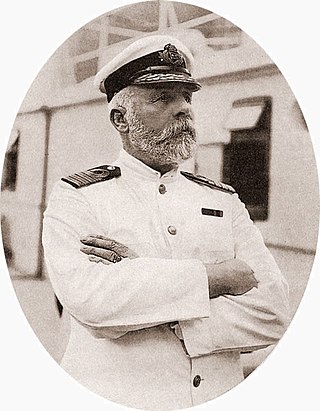
"The captain goes down with the ship" is a maritime tradition that a sea captain holds the ultimate responsibility for both the ship and everyone embarked on it, and in an emergency they will devote their time to save those on board or die trying. Although often connected to the sinking of RMS Titanic in 1912 and its captain, Edward Smith, the tradition precedes Titanic by several years. In most instances, captains forgo their own rapid departure of a ship in distress, and concentrate instead on saving other people. It often results in either the death or belated rescue of the captain as the last person on board.

SS Managua was a Nicaraguan cargo ship that the German submarine U-67 torpedoed on 16 June 1942 in the Straits of Florida while she was travelling from Charleston, South Carolina, United States to Havana, Cuba with a cargo of potash. The ship was built as Glorieta, a Design 1049 ship in 1919, operated by the United States Shipping Board (USSB) until sold to the Munson Steamship Line in 1920 and renamed Munisla. The ship was sold foreign to a Honduran company, Garcia, in 1937 and renamed Neptuno. In 1941 the ship was re-flagged in Nicaragua with the name Managua.
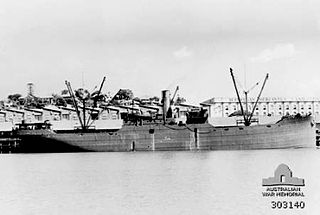
SS Coast Trader was built as the cargo ship SS Holyoke Bridge in 1920 by the Submarine Boat Company in Newark, New Jersey. The Coast Trader was torpedoed and sank 35 nautical miles southwest of Cape Flattery, off the Strait of Juan de Fuca in U.S. state of Washington by the Japanese submarine I-26. Survivors were rescued by schooner Virginia I and HMCS Edmundston. She rests on the ocean floor at.
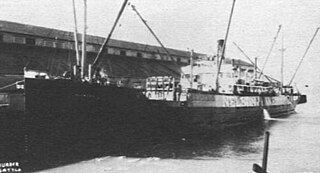
USAT Arcata, was built in 1919 as SS Glymont for the United States Shipping Board as a merchant ship by the Albina Engine & Machine Works in Portland, Oregon. The 2,722-ton cargo ship Glymont was operated by the Matson Navigation until 1923 in post World War I work. In 1923 she was sold to Cook C. W. of San Francisco. In 1925 she was sold to Nelson Charles Company of San Francisco. In 1937 the ship was sold to the Hammond Lumber Company of Fairhaven, California and renamed Arcata. For World War II, in 1941, she was converted to the United States Army troopship USAT Arcata. She took supplies and troops to Guam. On July 14, 1942, she was attacked by the Japanese submarine I-7 and sank. Arcata was operating as a coastal resupply in the Gulf of Alaska, south of the Aleutian Islands at, approximately 165 nautical miles southeast of Sand Point, when she sank. She was returning after taking supplies to US troops fighting in the Aleutian Islands campaign.
















